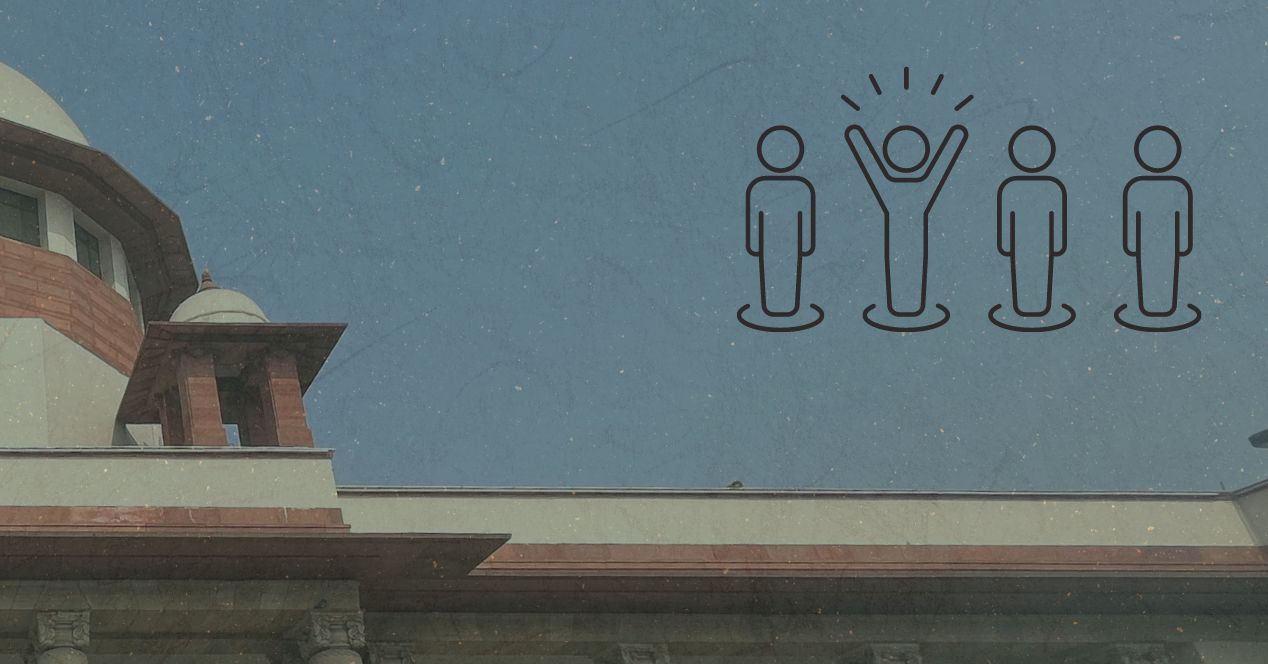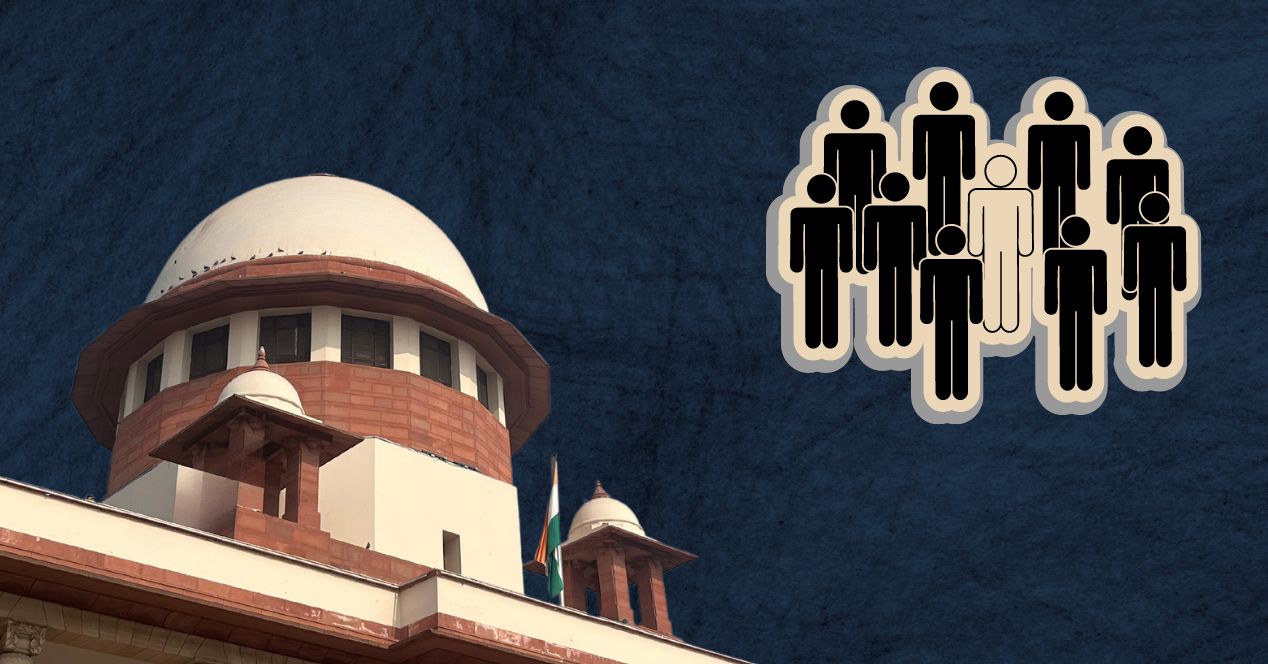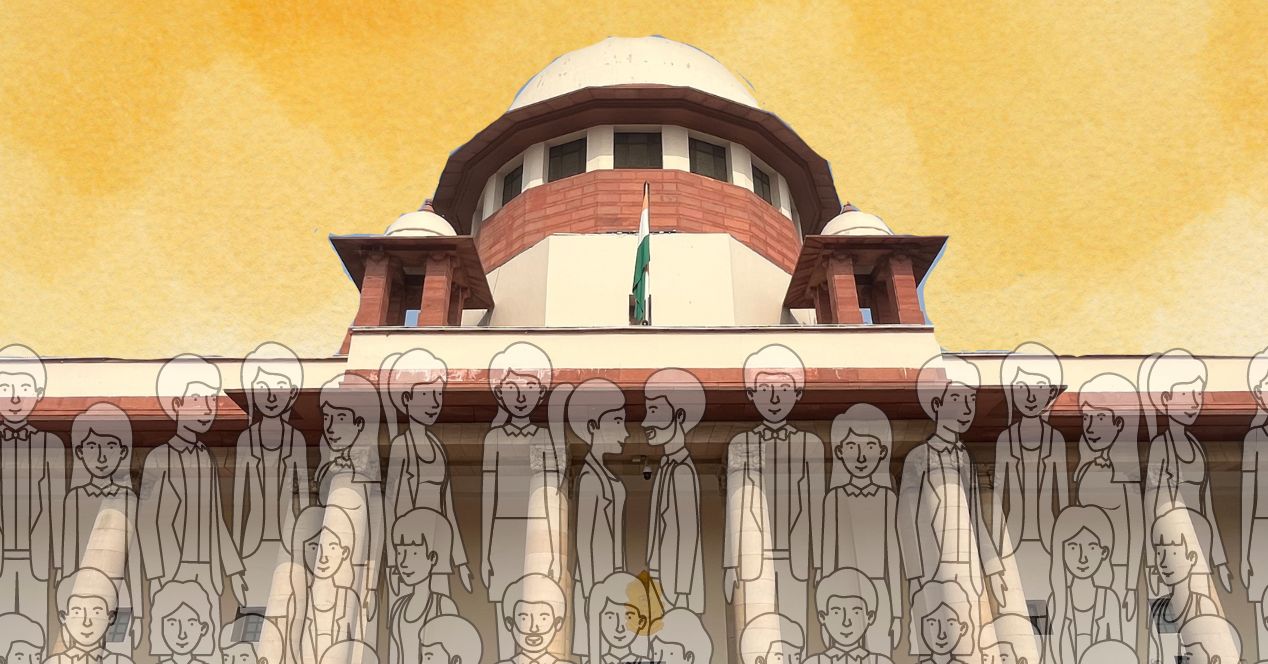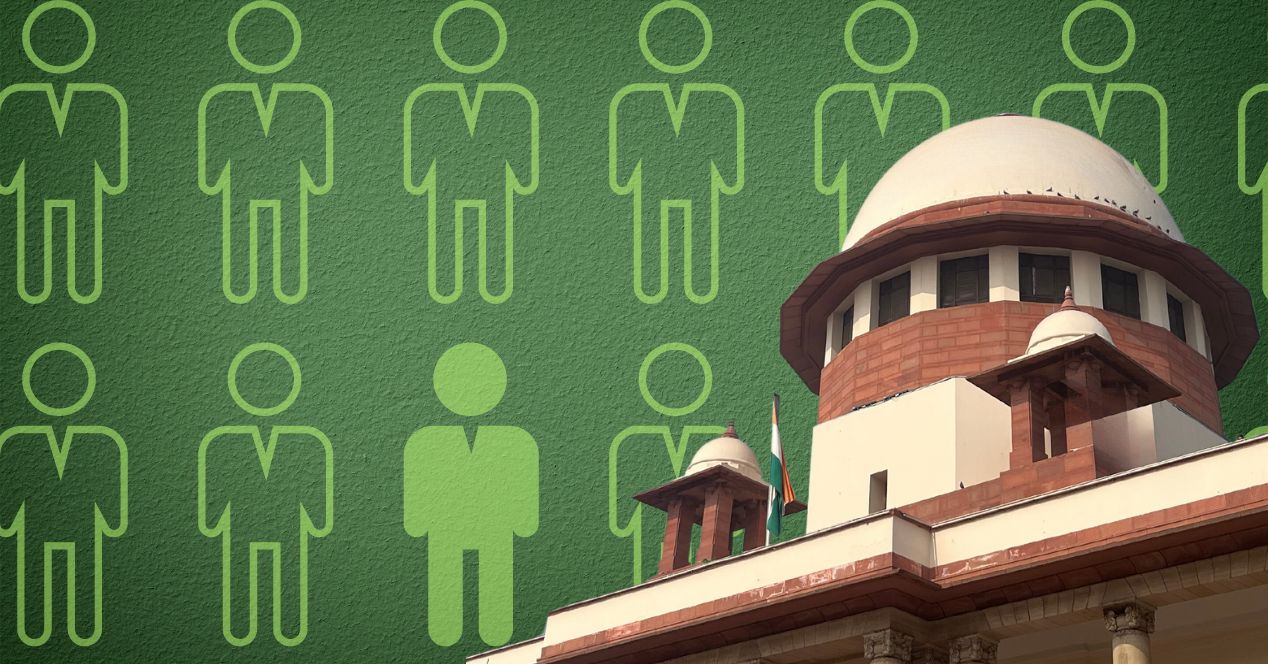Sub-Classification Within Reserved Categories | Judgement Summary
Validity of Sub-Classification Within Reserved CategoriesJudges: D.Y. Chandrachud CJI, B.R. Gavai J, Vikram Nath J, B.M. Trivedi J, Pankaj Mithal J, Manoj Misra J, S.C. Sharma J
On 1 August 2024, a seven-judge Constitution Bench of the Supreme Court led by Chief Justice D.Y. Chandrachud upheld the validity of sub-classification within Scheduled Caste categories in a 6:1 majority, overruling the five-judge bench decision in E.V. Chinaiah v State of Andhra Pradesh (2004).
The judgement has six different opinions. The Chief wrote on behalf of himself and Justice Manoj Misra. Justices B.R. Gavai and Pankaj Mithal authored separate, concurring opinions. Justices Vikram Nath and S.C. Sharma authored opinions agreeing with the Chief and Justice Gavai.
Justice Bela Trivedi wrote a dissenting opinion. She noted that the Chinnaiah was good law which had been “casually” referred by a three-judge bench without a well-reasoned order. The Chief, in his opinion, laid down the yardstick for sub-classification and its limits, noting that it had to be based on empirical data and would be subject to judicial review. Justice Gavai endorsed the application of ‘creamy layer’ exclusion to Scheduled Castes.
Amongst other things, Justice Mithal observed that, historically, “there was no existence of a caste system”—rather, he said, there was a varna system “ that categorised people “according to their profession, talent, qualities and nature”. Concurring with the Chief and Justice Gavai, he also observed sub-classification was necessary as statistics revealed that the most disadvantaged and marginalised individuals have failed to reap the benefits of reservation at higher levels.
Justice Mithal also noted that only children of affluent or urbanised castes are able to access higher education and capitalise on reservation benefits, highlighting a persistent inequality. But Justice Mithal remarked that reservation, if any, must be restricted to the first generation of the family.
In two-page orders each, Justices Nath and Sharma concurred with the Chief and the observations made by Justice Gavai on the exclusion of the ‘creamy layer’ Scheduled Castes from the benefits of reservation.
Here’s a detailed summary of the key findings and observations in the judgement.
Background
In 1975, the government of Punjab issued a notification dividing its existing 25 percent reservation for Scheduled Castes (SC) into two categories: 50 percent to Balmikis (Valmikis) and Mazhabi Sikhs and the other half for the remaining Scheduled castes in the state.
Almost three decades later, in E.V. Chinnaiah v State of Andhra Pradesh (2004), a five-judge set aside a similar law in Andhra Pradesh reasoning that sub-classification within the SC category was not permitted. Subsequently, the Punjab and Haryana High Court struck down the Punjab notification on 25 July 2006.
Following this decision, the Punjab government passed the Punjab Scheduled Caste and Backward Classes (Reservation in Services) Act, 2006 (the Act). Section 4(5) of the Act reintroduced 50 percent “first preference” reservations for Balmikis and Mazhabi Sikhs.
On 29 March 2010, the Punjab and Haryana High Court struck down this provision, relying on the Chinnaiah judgement. The Punjab government moved the Supreme Court on appeal.
In August 2014, a three-judge bench referred the matter to a five-judge Constitution Bench to assess the correctness of E.V. Chinnaiah. On 15 July 2020, a five-judge bench led by Justice Arun Mishra began hearing the matter and referred the case to a seven-judge bench on 28 August 2020.
On 6 February 2024, a seven-judge bench led by Chief Justice D.Y. Chandrachud began hearing the case.
Does Article 14 permit sub-classification?
The CJI wrote that Article 14 of the Constitution permits sub-classification within reserved categories as it recognises Scheduled Castes, Scheduled Tribes and Other Backward Classes as a “backward class of citizens.”
Article 14, the Chief wrote, recognises two expressions: equality before the law and equal protection of laws. The former means that there are no special privileges for any individual within the territory. It does not, however, “mean that the same law should apply to everyone, but that the same law should apply to those who are similarly situated.”
The second expression, the Chief noted, meant that laws must be administered equally among equals. According to the Chief, this also “enjoins the State with the power to reasonably classify those who are differently placed.”
Equality enshrined under Article 14, he said, does not entail “sameness” but that there must be “there must be a parity of treatment under parity of conditions.” The provision incorporated substantive equality—the equality of opportunities over equality of treatment.
In this context, the Chief noted that “sub-classification is a facet of equality.” The law can further classify a class that is already created by law for a limited purpose (in this case the Scheduled Caste group) if it is heterogeneous for another purpose (varying levels of backwardness within this group).
The test to be followed was that of intelligible differentia and rational nexus. The term “intelligible differentia” means a discernible and understandable distinction. Therefore, a distinction is understandable when a clear criterion or standard exists to differentiate between the group included and those excluded.
Rationale nexus means to show that there is a clear and rational link between the classification criterion and the intended outcome or goal of the classification.
The judgement highlights that the test to determine whether sub-classification within a class is justified under Article 14, it needs to be assessed whether the class is homogeneous. If the answer is no, then sub-classification is permissible.
Are Scheduled Castes a homogeneous group?
The Chief noted that the Court in Chinnaiah wrongly held that Scheduled Castes were a homogeneous group because they were included in the Presidential List of 1950. He noted that the inclusion in the Presidential List “does not automatically lead to the formation of a uniform and internally homogenous class which cannot be further classified.”
He went on to state that there was historical, empirical evidence to show that the Scheduled Castes were a heterogeneous group with an inter-se backwardness. He stated further that field researchers like A.M. Shah had also noted that Scheduled Castes are not one homogenous class.
Moreover, the Chief noted that heterogeneity within the group was indicated in the Presidential List itself— certain castes are notified as Scheduled Castes in specific localities.
Justice Gavai Held that the “hardships and the backwardness which these categories have suffered historically would differ from category to category.”
Justice Trivedi adopted the opposite view in her dissent. She held that the etymological history of the term “Scheduled Caste” coupled with the Presidential List published under Article 341 made the “Scheduled Caste” a homogenous class. This cannot be tinkered with by state governments. A “bare reading of Article 341” suggests “that Scheduled Castes is an amalgam of castes, races, groups, tribes, communities.” Even if members within the Scheduled Caste category belong to different races or castes, they all acquire a “special status by virtue of Presidential Notification under Article 341.”
Is the Scheduled Caste category a deeming legal fiction?
A legal fiction refers to a presumption that certain concepts which do not exist in fact will be treated as real and existing for the purpose of law. Relying on the fact that Scheduled Castes were listed by the President under Article 341, the respondents in the present case had submitted that the Scheduled Caste group was a “legal fiction” and sub-classification within this legal fiction was not permissible.
CJI Chandrachud stated that the use of the word “deemed” in Article 341 was not indicative of the creation of a legal fiction. Even if it was created, the intention of this legal fiction created under Article 341 was for the limited purpose of identifying the Scheduled Castes and differentiating them from other groups. It was not an indicator of the varying degrees of heterogeneity within the group or a mark of their homogeneity. The only outcome of this List was that it confirmed that only castes included in the List will “receive the benefits that the Constitution provides to the Scheduled Castes as a class.”
Was Chinnaiah’s interpretation of N.M. Thomas erroneous?
The Chief observed that the bench in Chinnaiah wrongly interpreted the decision of the Court in N.M Thomas v Union of India (1976) to hold that the Scheduled Caste List was a class in itself.
He observed that in Chinnaiah, Justice Santosh Hegde held that the Presidential List constitutes a distinct list based on the following observations in N.M. Thomas:
- Justice Mathew stated that Presidential Notification confers a new status on Scheduled Caste members.
- Justice Krishna Iyer observed that Scheduled Castes are not solely Hindu castes, but rather a diverse group of castes, races, tribes, and communities recognized as the most disadvantaged and in need of significant state support; and
- Justice Fazal Ali pointed out that the Constitution grants Scheduled Castes and Tribes a unique status, distinguishing them as a separate class.
However, the Chief Justice wrote that the context of these observations was important. He summarised that in N.M Thomas, one of the issues before the Court was to decide whether a concession provided to the members of the Scheduled Castes in an entrance exam violated Article 16(2) since it discriminates solely on the ground of “caste”. In that context, the judges had observed that the Scheduled Castes, once notified by the President under Article 341, became a unique “class” of individuals, eligible for affirmative action benefits. But they do not state that it is a homogeneous group which cannot be further classified. Further, the Chief noted that when N.M Thomas is read together with Indra Sawhney v Union of India (1992), it becomes clear that “caste is itself a class.”
Justice Gavai reached the same conclusion. He observed that none of the opinions in N.M. Thomas held that Scheduled Castes are a homogeneous class—rather, what the judgement held was that once the “Scheduled Castes and Scheduled Tribes have been identified and they find a place in the Presidential List, they will continue to be the Scheduled Castes and Scheduled Tribes.”
Does Indra Sawhney restrict sub-classification to OBCs?
Another observation made by the Chief relates to the extent of the judgement in Indra Sawhney. In Chinnaiah, the Court, relying on Justice Jeevan Reddy’s observations in Indra Sawhney, had held that ruling on sub-classification applies exclusively to the Other Backward Classes and does not extend to the Scheduled Castes.
However, the Chief clarified that Justice Reddy’s observations must be viewed in context. The issue in Indra Sawhney was restricted to Other Backward Classes. He concluded that “the principle of subclassification will be applicable to the Scheduled Castes if the social positions of the constituents among the castes/groups is not comparable.”
Justice Gavai also held that Justice Reddy had stated that Scheduled Castes were kept aside for the purposes of the judgement in Indra Sawhney because they are “admittedly included within the backward classes.”
In the dissenting opinion, Justice Trivedi held that Indra Sawhney was considering the ambit of “backward class” as mentioned under Article 16(4) of the Constitution. It did not deal with the issue of Scheduled Caste and Scheduled Tribe categories in light of Article 341.
Does sub-classification of the Scheduled Caste group amount to “tinkering” with the Presidential List?
Relying on the reasoning in E.V. Chinnaiah, the petitioners in the present case had argued that by creating sub-classifications, states were “tinkering” with the Presidential List under Article 341.
Article 341(1) states that the President has the authority to designate certain castes, races, or tribes (or parts/groups within them) as Scheduled Castes for a specific State or Union territory, following consultation with the State Governor (if applicable), through a public notification.
Article 341(2) states that Parliament has the power to modify the list of Scheduled Castes specified in the Presidential notification by including or excluding through legislation.
The Chief held that sub-classification did not entail including or excluding castes from the Presidential List. Therefore, it did not amount to “tinkering” with the list.
Justice Gavai also noted that simply because “preferential treatment is provided to the more backward or more inadequately represented among the Scheduled Castes, it would not amount to tinkering with the Presidential List.”
In her dissent, Justice Trivedi held that states are not competent to enact affirmative action laws to provide preferential treatment to castes by sub-classifying or dividing the castes, race, or tribe listed under Article 341. The list notified under Article 341 is final after publication. The President cannot make modifications to this List by making a subsequent notification. The power to modify the list is only with Parliament as per Article 341(2). Although, sub-classification would not “per se” amount to inclusion or exclusion of any caste from the Presidential List of Scheduled Castes, it would amount to tinkering with the Presidential List of Scheduled Castes under Article 341(1). This is prohibited under Article 342(2).
Do states have the power to create sub-classification?
The Chief’s judgement noted that states had the legislative power to create sub-classification as it did not amount to tampering with the Presidential List. The states’ power to do so stemmed from Articles 15 and 16 of the Constitution.
In her dissent, Justice Trivedi noted that no provision of the Constitution permitted state legislatures to modify the list for the purposes of reservation under Articles 15 and 16.
What is the criteria for sub-classification?
Having established that the Scheduled Castes were not a homogeneous group, the Chief then looked at the criteria for subclassifications.
Article 15(4) provides that the beneficiary class for the purposes of the provision must be socially and educationally backward. In this context, the Chief observed that social and economic backwardness were not mutually exclusive and must be seen together.
The Chief also noted that according to the majority in Indra Sawhney, scope of the phrase “backward class” under Article 16(4) was wider than that under Article 15(4). The purpose of both Articles was “to ensure substantive equality by uplifting the socially backward class.” Therefore, sub-classification had to be based on “social backwardness.”
Elaborating on “adequate representation”, the Chief clarified that it was clear from precedents that “adequate representation” meant “qualitative representation” and not just “numerical representation”.
The Chief illustrated his point with an example: Suppose two classes were afforded reservation but the lower posts were filled by one class and higher posts were filled by another. In such a situation, merely looking at a numerical representation will not paint an accurate picture. In reality, the higher posts are occupied by one class and the lower posts by another. The quality of the representation would come into question.
To create sub-classifications within the group, the Chief wrote, the state needed to prove that there was varying degrees of backwardness and “inadequate representation” within the group. This had to be done based on empirical evidence.
While the majority in Indra Sawhney had observed that Scheduled Castes are backward classes for the purposes of Articles 15 and 16, this did not exempt the State from “having to justify the decision of sub-classifying within the Scheduled Castes and Scheduled Tribes for the purposes of reservation.” The decision of the state to this extent is subject to judicial review, the Chief held.
The Chief wrote that he agreed with Justice Gavai that the “State must prove that the group/caste carved out from the larger group of Scheduled Castes is more disadvantaged and inadequately represented.”
What are the limits of sub-classification?
After determining the yardstick for sub-classification, the Chief noted that there were two approaches to sub-classification: The preferential model and the exclusive model. In the preferential model, classes that are more socially backward are given a preference to “all the seats that are reserved for the Scheduled Castes.” In the exclusive model, seats are made exclusively available to certain castes.
The Court noted that the two models differed from each other to a limited extent—in the exclusive model, the seats that are not filled will be carried over to be filled by the same castes in the subsequent year and in the preferential model, the seats that are not filled will be made available that year to the other castes in the reserved category.
Each of these approaches had two versions as well. In the first scenario of preferential treatment, specific castes within the Scheduled Castes category are granted priority access to all reserved seats, effectively giving them the first opportunity to fill those positions. In the second scenario, the sub-categorised class receives preference for a designated percentage of seats. Any seats that remain unfilled after this allocation will then become available to other categories within the Scheduled Castes, ensuring a more equitable distribution of opportunities.
In the first scenario of exclusive treatment, a designated percentage of seats will be set aside for the sub-categorised class, and any unfilled seats will be carried over to the following year, ensuring that the same class has the opportunity to fill them.
In the second scenario, all reserved seats are exclusively allocated to a specific caste within the category, and any unfilled seats will also be carried over to the next year, maintaining their exclusivity.
Whether a model is unconstitutional, the Court held, would depend on whether it excludes Scheduled Castes under the List under Article 341, as inclusion and exclusion was solely the power of Parliament. To this end, the first variant of the preferential and the second variant of the exclusive models would be unconstitutional since they had the effect of excluding certain castes from the benefit of reservation in a given year.
The Chief also noted that the state has the power to follow either of the two permissible models discussed above while reserving seats through sub-classification—however, its decision was subject to judicial review.
Justice Gavai also noted that when implementing sub-classification, the state cannot allocate 100 percent of the available seats for Scheduled Castes to a single sub-group; rather, sub-classification is only permissible if reservations are made for both the sub-group and the broader class.
Are individual castes a class?
A key argument in the case concerned whether individual entries of the Scheduled Caste list could be a “class” for the purposes of Article 15 and 16. The petitioners had argued in the affirmative and the respondents in the negative.
The Chief wrote that the “Constitution does not bar the allocation of a percentage of seats to a caste since every caste is a class.” However, he cautioned that the state must prove inter-se backwardness within the category.
Further, he also noted that though sub-classification within the Scheduled Caste category was permitted, “there can never be a situation where seats are allocated for every caste separately.” When two or more classes exhibit similar levels of social backwardness, they should be categorised together for the purpose of reservation benefits.
Can the ‘creamy layer’ of Scheduled Castes be excluded from reservation?
Even as Justice Gavai noted that the “creamy layer exclusion” in Indra Sahwney was only for Other Backward Castes, he said that the State must “evolve a policy for identifying the creamy layer even from the Scheduled Castes and Scheduled Tribes so as to exclude them from the benefit of affirmative action.”
He noted that within the Scheduled Castes, certain castes were reaping the benefits of reservation more than others. According to Justice Gavai, some of these castes had reached a stage “where on their own accord they should walk out of the special provisions and give way to the deserving and needy.”
He pointed out that individuals from categories that receive a significant portion of reservations are now denying special consideration to the less privileged castes within the group, thereby mirroring the historical actions of higher castes that marginalised backward classes for centuries.
Therefore, he noted that identifying the ‘creamy layer’ of Scheduled Castes can achieve real equality. He concluded that cases which recognised the extension of the ‘creamy layer’ principle to the Scheduled Caste group—such as M. Nagaraj v Union of India (2006) , Jarnail Singh v Lacchmi Narain Gupta (2018) and Davinder Singh v State of Pubnjab (2020)—laid down the correct position of law.
Justice Gavai also clarified that the criterion for assessing the ‘creamy layer’ for Scheduled Castes and Scheduled Tribes should be different from those applicable to Other Backward Castes. His judgement does not indicate what these criteria should be.
Justices Nath and Sharma concurred with his observation.
Chief Justice D.Y. Chandrachud’s opinion makes no mention of extending the ‘creamy layer’ doctrine to Scheduled Castes.
Correction: An earlier version had mistakenly swapped the words ‘preferential’ and ‘exclusive’ in a paragraph that details the difference between the preferential and exclusive models for sub-classification. The error is regretted.




